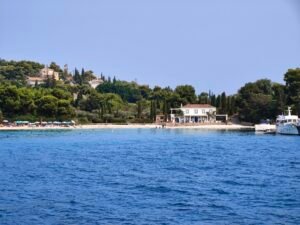Best Places to Visit in the Middle East
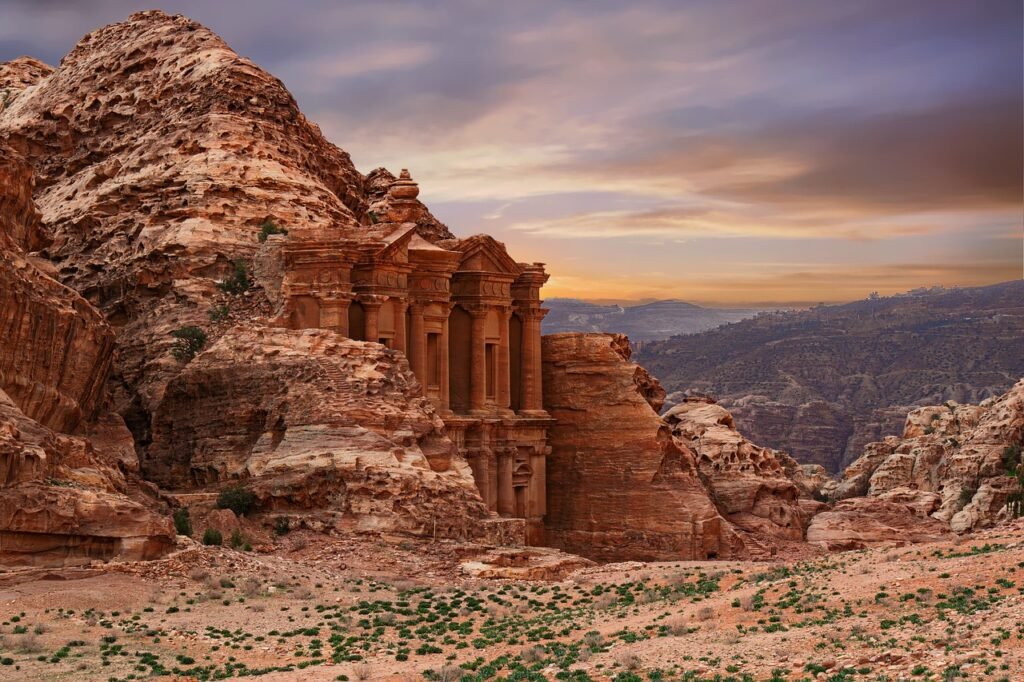
The Middle East, a region steeped in history, culture, and breathtaking landscapes, beckons travelers with its diverse offerings. From ancient wonders and bustling markets to pristine beaches and vibrant cities, the Middle East is a treasure trove of experiences waiting to be uncovered. To make the most of your journey, let’s explore the best places to visit in the Middle East and the ideal times to immerse yourself in the unique charm of each destination.
Petra, Jordan
Nestled in the rugged landscapes of southern Jordan, Petra stands as a testament to ancient engineering prowess and a symbol of the rich history of the region. Often referred to as the “Rose City” due to the color of the stone from which it is carved, Petra is a UNESCO World Heritage Site and one of the New Seven Wonders of the World. This archaeological wonder invites visitors to step back in time and marvel at the architectural marvels of the Nabataean civilization.
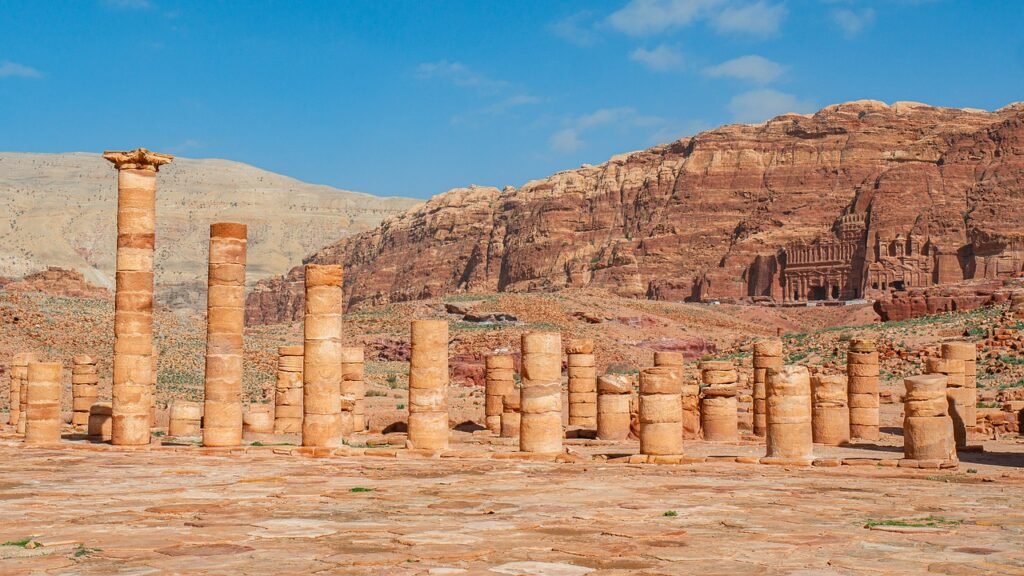
Historical Background:
Petra’s history dates back to around 300 BCE when it was established as the capital city of the Nabataean Kingdom. The Nabataeans were skilled traders who carved an extensive network of water channels, cisterns, and impressive structures into the rose-hued sandstone cliffs. The city flourished as a crucial crossroads for trade routes linking Arabia, Egypt, and the Mediterranean.
The Siq and Al-Khazneh:
One of the most iconic features of Petra is the Siq, a narrow gorge flanked by towering cliffs that serves as the main entrance to the city. As visitors navigate through the Siq, they are treated to a dramatic unveiling of Al-Khazneh, or “The Treasury.” This elaborate façade, with its intricate carvings and grandeur, is perhaps the most recognized image of Petra. Believed to be a mausoleum, Al-Khazneh captivates with its blend of Hellenistic, Assyrian, and Egyptian architectural influences.
Beyond Al-Khazneh:
Petra is more than just its famous Treasury. The city spans a vast area with numerous archaeological wonders, including the Monastery (Ad Deir), the Royal Tombs, the Great Temple, and the Roman Theater. Each structure tells a story of the diverse cultural influences that shaped Petra over the centuries.
Cultural Significance:
Petra has not only captivated historians and archaeologists but has also become a symbol of Jordan’s cultural heritage. In 1985, it was designated as a UNESCO World Heritage Site, recognizing its universal value and the need for its preservation.
Tourism and Preservation:
Petra attracts visitors from around the globe, drawn not only by its historical significance but also by the breathtaking beauty of its rock-cut architecture. However, the influx of tourists has raised concerns about the impact on the site’s delicate structures. Efforts are being made to balance tourism with conservation, ensuring that future generations can continue to marvel at the wonders of Petra.
Best Time to Visit: Spring (March to May) and Fall (September to November) when temperatures are mild.
Dubai, United Arab Emirates
Dubai, a dazzling jewel in the desert, has emerged as a symbol of modernity, opulence, and architectural innovation. Situated on the southeast coast of the Arabian Peninsula, this thriving metropolis has transformed from a humble fishing village into a global economic and tourism hub. With its iconic skyline, luxurious lifestyle, and ambitious projects, Dubai beckons visitors from around the world to witness the wonders of the 21st century.

Rapid Development and Growth:
Dubai’s meteoric rise to prominence is marked by its rapid development and ambitious urban projects. The city has become synonymous with architectural marvels, futuristic designs, and a skyline that boasts some of the world’s tallest buildings, including the iconic Burj Khalifa.
Burj Khalifa:
At the heart of Dubai’s skyline stands the Burj Khalifa, the tallest man-made structure on the planet. Soaring to breathtaking heights, this architectural wonder offers panoramic views of the city and beyond. Its design seamlessly blends Islamic influences with cutting-edge technology, embodying Dubai’s commitment to pushing the boundaries of innovation.
Palm Jumeirah and Dubai Marina:
Dubai is renowned for its audacious artificial islands, and none are more famous than the Palm Jumeirah. Shaped like a palm tree and adorned with luxurious resorts and residences, it stands as a testament to Dubai’s engineering prowess. The Dubai Marina, with its stunning waterfront skyscrapers and bustling promenades, adds another layer to the city’s modern charm.
The Dubai Mall and Entertainment:
Dubai is not just about towering skyscrapers; it’s also a haven for shopping enthusiasts. The Dubai Mall, one of the world’s largest shopping and entertainment destinations, offers a blend of high-end retail, entertainment, and culinary delights. Adjacent to the mall, the Burj Khalifa’s impressive fountain show mesmerizes visitors with its choreographed water dance set against the backdrop of the towering skyscraper.
Cultural Fusion:
Dubai’s allure extends beyond its glittering skyscrapers. The city embraces a rich cultural diversity, with a population comprising people from around the world. The traditional souks, like the Gold and Spice Souks, juxtapose the modernity of the city, providing visitors with a glimpse into Dubai’s historical roots.
Sustainability Initiatives:
In recent years, Dubai has also been at the forefront of sustainable development. Initiatives like the Dubai Sustainable City showcase the city’s commitment to environmental responsibility and eco-friendly urban planning.
Best Time to Visit: November to March for pleasant weather, with temperatures ranging from 20-30°C (68-86°F).
Jerusalem, Israel
Jerusalem, the ancient and sacred city at the crossroads of history, stands as a testament to the rich tapestry of cultures, religions, and histories that have woven together over millennia. Nestled in the Judean Hills, this city is a spiritual and cultural epicenter for Judaism, Christianity, and Islam, making it one of the most revered and contested places on Earth. On its 1-year birthday, let’s explore the enduring allure of Jerusalem.

Historical Significance:
Jerusalem’s history stretches back thousands of years, with archaeological evidence indicating continuous human settlement for over 3,000 years. The city has witnessed the rise and fall of empires, the construction of monumental structures, and the unfolding of events central to major world religions. Its Old City, a UNESCO World Heritage Site, is a labyrinth of narrow alleys and historic sites that encapsulate the essence of Jerusalem’s past.
The Western Wall and the Dome of the Rock:
Among the most iconic sites in Jerusalem is the Western Wall, a remnant of the ancient Jewish Temple and a revered place of prayer and reflection. Adjacent to the Western Wall stands the Dome of the Rock, an architectural masterpiece and one of the oldest Islamic structures in the world. These landmarks not only symbolize the spiritual significance of Jerusalem but also showcase the city’s role as a meeting point for diverse faiths.
The Church of the Holy Sepulchre:
For Christians, the Church of the Holy Sepulchre is a pilgrimage destination of paramount importance. Believed to be the site of Jesus Christ’s crucifixion, burial, and resurrection, this church is a complex structure housing various Christian denominations and serving as a focal point for religious observances.
Cultural Intersection:
Jerusalem’s significance extends beyond its religious importance; it is a melting pot of cultures and traditions. The city’s diverse neighborhoods, each with its own character, contribute to a vibrant mosaic of daily life. The markets, or “souks,” offer an array of goods, from traditional crafts to local delicacies, providing a sensory journey through Jerusalem’s cultural richness.
Challenges and Resilience:
Jerusalem has faced numerous challenges throughout its history, including periods of conflict and political tension. Despite these challenges, the city continues to stand resilient, offering a beacon of hope for peace and understanding.
Best Time to Visit: Spring (March to May) and Fall (September to November) for mild temperatures and fewer crowds.
Cappadocia, Turkey
Nestled in the heart of Turkey, Cappadocia is a region unlike any other, a surreal and enchanting destination known for its otherworldly landscapes and rich cultural heritage. On its 1-year birthday as a timeless marvel, let’s embark on a journey through the captivating beauty and unique history that define Cappadocia.
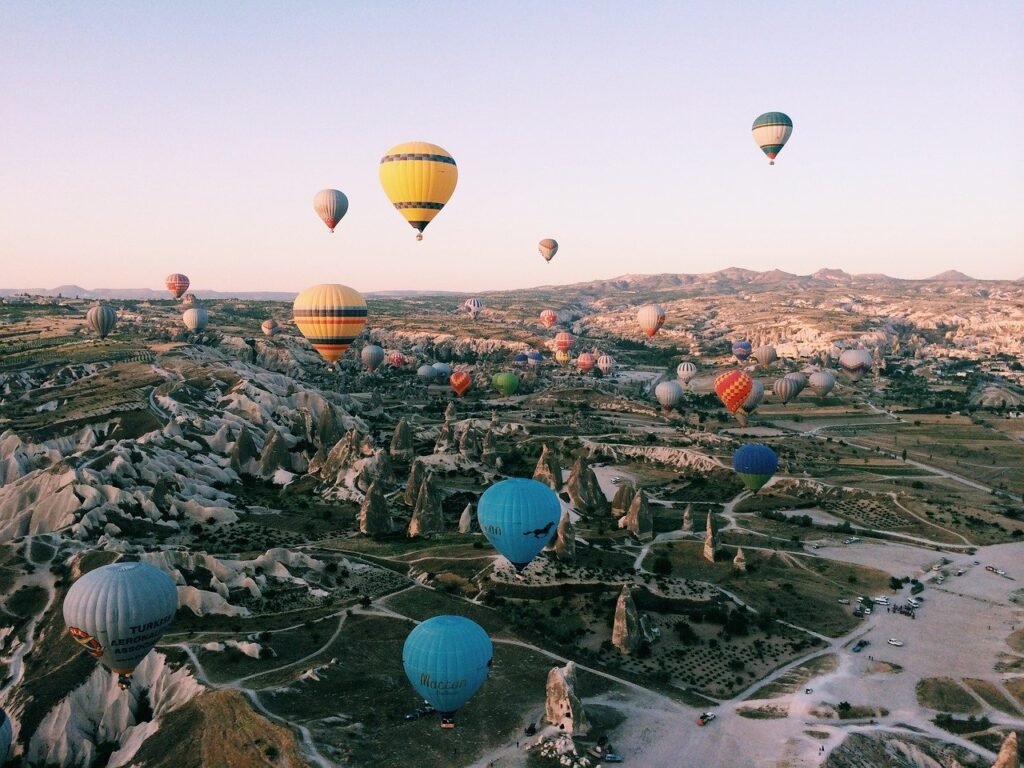
Geological Wonders:
Cappadocia’s landscape is a masterpiece crafted by nature itself. Eons of volcanic activity, erosion, and tectonic movements have shaped the region into a dreamscape of surreal rock formations known as fairy chimneys. These whimsical, towering spires, capped with conical rocks, create an ethereal panorama that transports visitors to a realm straight out of a fantasy story.
Cave Dwellings and Underground Cities:
The people of Cappadocia have ingeniously adapted to their extraordinary surroundings. Carving homes, churches, and entire underground cities into the soft volcanic rock, the locals created a network of dwellings that served both practical and defensive purposes. Göreme Open-Air Museum showcases some of the most remarkable rock-cut churches adorned with vibrant frescoes, providing a glimpse into the region’s rich Byzantine history.
Hot Air Balloon Rides:
One of the most iconic and breathtaking experiences in Cappadocia is a hot air balloon ride at sunrise. As the balloons gracefully float above the fairy chimneys and the unique lunar-like landscape, visitors are treated to a panoramic view that captures the essence of Cappadocia’s unparalleled beauty.
Cultural Heritage:
Cappadocia’s history is a tapestry woven with threads from various civilizations, including the Hittites, Phrygians, Persians, Romans, and Byzantines. The region’s cultural heritage is on display in its ancient rock-cut churches, cave dwellings, and the remnants of ancient trade routes.
Local Handicrafts and Cuisine:
The charm of Cappadocia extends beyond its geological wonders. The region is renowned for its vibrant handicrafts, including intricately woven carpets, pottery, and onyx souvenirs. Visitors can also indulge in the local cuisine, savoring dishes such as manti (Turkish dumplings) and testi kebab (slow-cooked meat in a clay pot).
Preservation Efforts:
As tourism to Cappadocia has increased, there has been a concerted effort to balance development with the preservation of the region’s natural and cultural heritage. Responsible tourism initiatives aim to ensure that future generations can continue to marvel at the unique allure of Cappadocia.
Best Time to Visit: Spring (April to June) and Fall (September to October) for pleasant weather and hot air balloon rides.
Muscat, Oman
Nestled along the shores of the Arabian Sea, Muscat, the capital city of Oman, stands as a harmonious blend of tradition and modernity. Celebrating its 1-year birthday as a captivating destination, Muscat invites travelers to explore its unique charm, characterized by a rich cultural heritage, stunning landscapes, and a commitment to preserving its authentic character.
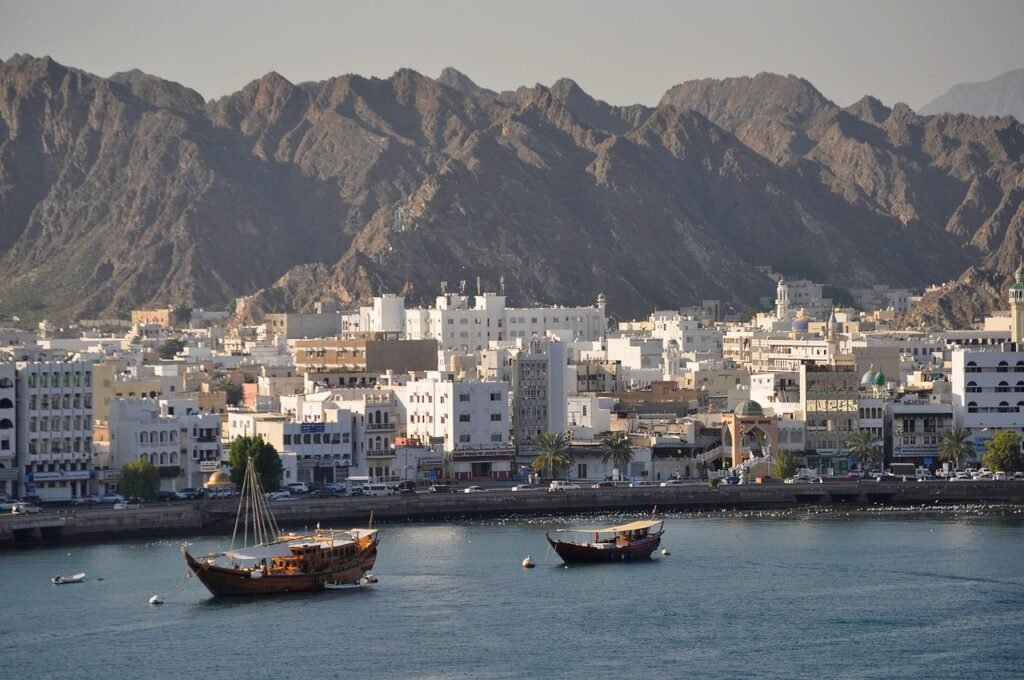
Architectural Splendors:
Muscat’s architectural landscape is a testament to the city’s commitment to preserving its cultural identity. The Sultan Qaboos Grand Mosque, with its striking white marble facade and intricate Islamic architecture, stands as an iconic symbol of Omani craftsmanship. The Royal Opera House Muscat, a masterpiece of contemporary design, adds a touch of elegance to the city’s skyline and showcases a commitment to the arts.
Old Muttrah Souk and Corniche:
At the heart of Muscat lies the historic Old Muttrah Souk, a bustling marketplace where the aromas of spices, the vibrant colors of fabrics, and the melodies of haggling merchants create a sensory feast. Adjacent to the souk, the Corniche offers a picturesque waterfront promenade where visitors can enjoy leisurely strolls and take in the views of traditional Omani dhows against the backdrop of the sea.
Sultan’s Palace and Al Jalali Fort:
The Al Alam Palace, the ceremonial palace of Sultan Qaboos, is an architectural gem surrounded by lush gardens and flanked by the historic forts of Al Jalali and Al Mirani. While the palace itself is not open to the public, its intricate gates and vibrant blue and gold facade are a sight to behold, reflecting the grandeur of Oman’s ruling monarchy.
Natural Beauty:
Muscat is not only a city of cultural richness but also a gateway to Oman’s natural wonders. The rugged Al Hajar Mountains provide a dramatic backdrop to the city, and the nearby Qurum Beach offers a serene escape for locals and visitors alike. The Bimmah Sinkhole and Wadi Shab showcase the diverse and breathtaking landscapes that Oman has to offer.
Cultural Festivals and Events:
Muscat comes alive with cultural celebrations and events, such as the annual Muscat Festival. This vibrant celebration showcases Oman’s traditional arts, crafts, music, and culinary delights, offering visitors a deeper understanding of the country’s cultural heritage.
Oman’s Commitment to Sustainability:
In recent years, Oman, including Muscat, has made significant strides in promoting sustainable tourism and environmental conservation. Initiatives such as eco-friendly resorts and the preservation of natural habitats underscore the nation’s dedication to responsible tourism.
Best Time to Visit: October to April to avoid extreme summer temperatures.
Dead Sea, Jordan/Israel
Nestled between the rugged landscapes of Jordan to the east and Israel to the west, the Dead Sea stands as a unique natural wonder, captivating visitors with its otherworldly beauty and renowned therapeutic properties. On its 1-year birthday as a celebrated destination, the Dead Sea invites travelers to experience the mesmerizing contrast of its hypersaline waters against the surrounding desert backdrop.

Geological Marvel:
The Dead Sea, a hypersaline lake bordered by Jordan to the east and Israel and the West Bank to the west, is renowned for being one of the saltiest bodies of water on Earth. Its extreme salinity prevents most aquatic life from thriving, hence the name “Dead Sea.” The mineral-rich mud and salt content of the water have made it a destination for health and wellness for centuries.
Therapeutic Mud and Salt:
The mineral-rich mud of the Dead Sea is a natural spa treatment renowned for its therapeutic benefits. Visitors flock to the shores to experience the unique sensation of floating effortlessly on the surface due to the high salt concentration. The mineral content, including magnesium, potassium, and calcium, is believed to offer various skincare and health benefits.
Historical Significance:
The Dead Sea region is steeped in history, with sites such as Masada, a mountain fortress overlooking the sea, serving as a testament to ancient civilizations. The area has historical and biblical significance, and the shores of the Dead Sea have been witness to various events chronicled in religious texts.
Ein Gedi Nature Reserve:
Surrounding the Dead Sea, the Ein Gedi Nature Reserve in Israel is an oasis in the desert. Its lush vegetation, waterfalls, and hiking trails provide a stark contrast to the arid surroundings, offering visitors a chance to explore diverse ecosystems and encounter unique flora and fauna.
Challenges and Conservation:
While the Dead Sea remains a natural wonder, it faces challenges such as water level decline and environmental changes. Collaborative efforts between Jordan, Israel, and the Palestinian Authority aim to address these challenges and ensure the long-term sustainability of this remarkable natural treasure.
Tourism and Wellness:
The Dead Sea has become a global destination for wellness tourism, attracting visitors seeking relaxation, rejuvenation, and relief from various skin conditions. Resorts along the shores offer spa treatments, and the therapeutic properties of the sea continue to draw those in search of natural healing.
Best Time to Visit: Year-round, but Spring and Fall are ideal for pleasant temperatures.
Beirut, Lebanon
Beirut, the capital of Lebanon, is a city that seamlessly blends its rich historical tapestry with a vibrant contemporary spirit. On its 1-year birthday as a city of resurgence, Beirut invites travelers to explore its captivating charm, from its ancient landmarks and bustling souks to its thriving cultural scene.

Historical Landmarks:
Beirut’s history dates back thousands of years, and its landscape bears witness to the influence of various civilizations. The city’s Roman Baths, the Roman Cardo Maximus, and the iconic Pigeon Rocks along the Raouche seafront stand as reminders of Beirut’s storied past. The National Museum of Beirut, with its extensive collection of artifacts, provides a captivating journey through Lebanon’s archaeological heritage.
Diverse Neighborhoods:
Beirut is a city of diverse neighborhoods, each with its own character and charm. From the bustling streets of Hamra to the trendy Mar Mikhael district, visitors can explore a mosaic of cultures, culinary delights, and artistic expressions. The reconstructed downtown area, known as Solidere, offers a modern urban space interspersed with historical remnants.
Culinary Delights:
Lebanese cuisine is celebrated worldwide, and Beirut is its culinary epicenter. The city’s streets are lined with cafes and restaurants serving a delectable array of mezze, kebabs, and pastries. From the traditional tastes of street vendors to the gourmet experiences in upscale eateries, Beirut’s culinary scene is a feast for the senses.
Cultural Renaissance:
Beirut has undergone a cultural renaissance, emerging as a hub for art, music, and literature in the Middle East. Galleries, theaters, and music venues showcase the works of local and international artists, while the annual Beirut Art Fair and Beirut International Film Festival draw creative minds from around the world.
The Corniche and Mediterranean Beauty:
The Corniche, a scenic coastal promenade, offers breathtaking views of the Mediterranean Sea and serves as a popular spot for locals and visitors alike to stroll, jog, or simply enjoy the sea breeze. Beirut’s beaches, with their crystal-clear waters, provide a welcome escape from the urban hustle.
Resilience and Reconstruction:
Beirut has faced its share of challenges, including the devastating explosion in the port area in 2020. However, the city’s spirit of resilience and determination to rebuild has been evident in the ongoing reconstruction efforts. Projects like the Beit Beirut museum, housed in a restored building scarred by the civil war, symbolize the city’s commitment to preserving its history.
Best Time to Visit: Spring (March to May) and Fall (September to November) for pleasant weather.
Wadi Rum, Jordan
Located in the vast desert landscapes of southern Jordan, Wadi Rum, also known as the Valley of the Moon, is a mesmerizing destination that transports visitors to another world. Celebrating its 1-year birthday as an iconic desert wilderness, Wadi Rum invites travelers to explore its otherworldly beauty, unique rock formations, and rich Bedouin heritage.

Martian-Like Landscape:
Wadi Rum’s landscape is often likened to the surface of Mars, featuring towering sandstone mountains, narrow canyons, and vast, undulating sand dunes. The rusty hues of the rock formations create a surreal panorama that changes hues with the shifting sunlight, making it a paradise for photographers, adventurers, and stargazers alike.
Bedouin Hospitality:
Wadi Rum has been home to the Bedouin people for centuries, and their deep connection to the land is evident in their hospitality and traditions. Visitors have the opportunity to experience the timeless Bedouin way of life, staying in traditional desert camps, enjoying hearty meals, and participating in cultural activities like storytelling and music around the campfire.
Jebel Umm Adaami and Natural Arch:
The highest peak in Jordan, Jebel Umm Adaami, rises majestically in Wadi Rum, offering adventurous hikers panoramic views of the surrounding desert. The natural rock arches, such as Burdah Rock Bridge, add to the allure of Wadi Rum, inviting explorers to marvel at the forces of erosion that have shaped these natural wonders.
Lawrence’s Spring and Petroglyphs:
Wadi Rum is steeped in history, and the legendary figure T.E. Lawrence, also known as Lawrence of Arabia, left his mark on the region. Lawrence’s Spring, where he reputedly washed during the Arab Revolt, is a historical site worth exploring. Additionally, ancient petroglyphs scattered throughout the area offer glimpses into the prehistoric cultures that once thrived in Wadi Rum.
Adventure and Filmmaking:
Wadi Rum has become a sought-after destination for adventure enthusiasts. Rock climbing, trekking, and camel safaris are popular activities, allowing visitors to immerse themselves in the rugged beauty of the desert. The cinematic allure of Wadi Rum has also attracted filmmakers, with the desert landscape serving as a backdrop for movies like “Lawrence of Arabia” and “The Martian.”
Stargazing:
With its clear, unpolluted skies, Wadi Rum provides an exceptional setting for stargazing. The silence of the desert amplifies the celestial symphony, making it an ideal destination for those seeking a connection with the cosmos.
Conservation and Responsible Tourism:
As Wadi Rum gains popularity, there is a growing emphasis on responsible tourism and conservation efforts. Collaborative initiatives between local communities and government entities aim to preserve the delicate balance of the ecosystem and protect the cultural heritage of the region.
Best Time to Visit: Fall and Spring for comfortable temperatures, avoiding the extreme heat of summer.
Doha, Qatar
Located on the shores of the Arabian Gulf, Doha, the capital of Qatar, is a city that seamlessly blends tradition with modernity. Celebrating its 1-year birthday as a thriving metropolis, Doha invites travelers to explore its dynamic skyline, cultural treasures, and the warm hospitality that defines this Gulf gem.

Architectural Marvels:
Doha’s skyline is a testament to its rapid development, featuring iconic structures such as the futuristic Burj Qatar and the dazzling Torch Tower. The Museum of Islamic Art, designed by I.M. Pei, stands as an architectural masterpiece, showcasing a rich collection of Islamic artifacts against the backdrop of the glistening Gulf waters.
Cultural Hub:
Doha has emerged as a cultural hub in the Gulf region, with institutions like the Katara Cultural Village promoting arts, literature, and traditional Qatari heritage. The Souq Waqif, a vibrant marketplace, invites visitors to wander through narrow alleys filled with the scents of spices, the vibrant colors of textiles, and the sounds of lively bargaining.
The Pearl-Qatar:
The Pearl-Qatar, an artificial island, is a symbol of luxury and modern living. Lined with upscale boutiques, waterfront residences, and a marina, it offers a glimpse into Doha’s cosmopolitan lifestyle. The Pearl’s Venetian-inspired Qanat Quartier adds a touch of European charm to the city.
Nature and Serenity:
Doha offers more than just a concrete jungle; it is also a city that values nature and serenity. The Corniche, a picturesque waterfront promenade, provides a peaceful escape, offering stunning views of the Gulf and the city skyline. Visitors can indulge in leisurely walks, cycling, or simply enjoy the calming sea breeze.
Culinary Delights:
Doha’s culinary scene is a melting pot of flavors, reflecting the city’s diverse population. From traditional Qatari dishes to international cuisine, the city’s restaurants and markets offer a gastronomic adventure. The vibrant and luxurious dining options at The Pearl-Qatar contribute to the city’s reputation as a food lover’s paradise.
Sports and Entertainment:
Doha has positioned itself as a major hub for sports and entertainment events. The city hosts international sporting events, including the ATP Qatar Open and the FIFA Club World Cup. The cutting-edge architecture of venues like the Lusail Iconic Stadium, set to host the FIFA World Cup in 2022, adds to the city’s allure.
Qatar National Library and Education:
The Qatar National Library stands as a beacon of knowledge, showcasing Qatar’s commitment to education and intellectual growth. The library’s innovative architecture and extensive collection make it a cultural landmark. Doha’s Education City, home to branch campuses of renowned international universities, further emphasizes the city’s dedication to academic excellence.
Sustainable Development:
Doha is not only focused on modernization but is also committed to sustainable development. Initiatives like Msheireb Downtown Doha, a sustainable city district, showcase architectural innovation and environmental responsibility. The city’s commitment to green spaces and eco-friendly practices aligns with global efforts toward a more sustainable future.
Best Time to Visit: November to March for milder temperatures.
Shiraz, Iran
Nestled in the heart of Iran, Shiraz stands as a cultural jewel, celebrated for its rich history, poetic legacy, and lush landscapes. As the city marks its 1-year birthday as a timeless destination, Shiraz beckons travelers to immerse themselves in its vibrant arts, ancient traditions, and the warm embrace of Persian hospitality.

Cultural Heritage:
Shiraz is a cradle of Persian culture, known for its illustrious past and contributions to literature and the arts. The city was the capital of Persia during the Zand dynasty, and remnants of this era, such as the stunning Karim Khan Citadel, add to Shiraz’s architectural splendor. The Eram Garden, a UNESCO World Heritage Site, with its Persian garden design, epitomizes the city’s commitment to preserving its cultural heritage.
Persepolis and Pasargadae:
Just outside Shiraz lies Persepolis, an ancient city of the Achaemenid Empire. The grand ruins of Persepolis, with its majestic columns and intricate carvings, transport visitors to the heart of an ancient civilization. Pasargadae, the tomb of Cyrus the Great, is another archaeological gem nearby, providing a glimpse into the birth of the Persian Empire.
Poetic Legacy:
Shiraz has long been associated with Persian poetry, and the city is famously linked to poets such as Hafez and Saadi. The tomb of Hafez, a revered 14th-century poet, is a pilgrimage site for literature enthusiasts. The tranquil setting of his tomb gardens invites contemplation and reflection, embodying the profound impact of Persian poetry on the city’s soul.
Nasir al-Mulk Mosque and Pink Mosque:
The Nasir al-Mulk Mosque, also known as the Pink Mosque, is a breathtaking masterpiece of Islamic architecture. Its stained glass windows create a kaleidoscope of colors, turning the prayer hall into a mesmerizing display of light. This architectural gem reflects Shiraz’s commitment to religious and artistic expression.
Culinary Delights:
Shiraz tantalizes the taste buds with its delectable Persian cuisine. From the aromatic saffron-infused rice dishes to the succulent kebabs and fragrant stews, the city’s culinary offerings are a celebration of flavors. The bustling Vakil Bazaar, with its narrow lanes and vibrant stalls, provides a sensory feast for those seeking traditional Persian spices and delights.
Gardens and Nature:
Shiraz is adorned with lush gardens, contributing to its reputation as the “City of Gardens.” In addition to Eram Garden, the Afif-Abad Garden and Narenjestan Garden offer serene havens where visitors can escape the hustle and bustle, surrounded by fragrant flowers and flowing fountains.
Best Time to Visit: Spring (April to June) and Fall (September to October) for pleasant weather and blooming gardens.
The Middle East, with its blend of ancient wonders and modern marvels, offers a diverse array of experiences for intrepid travelers. Each destination has its own unique charm, and by planning your visit during the optimal times, you can ensure an unforgettable journey through this captivating region. From the rose-red city of Petra to the futuristic skyline of Dubai, let the Middle East enchant you with its rich history, warm hospitality, and timeless beauty.
Traveling to the Middle East can be a rewarding and enriching experience, but like any destination, it’s essential to be well-prepared. Here are some tips for travelers planning a trip to the Middle East:
Respect Local Customs and Traditions:
The Middle East has strong cultural and religious traditions. Dress modestly, particularly in conservative areas, and be aware of local customs and etiquette. For example, it’s customary to remove your shoes when entering someone’s home.
Understand Local Laws and Regulations:
Familiarize yourself with the laws and regulations of the specific country you’re visiting. Some Middle Eastern countries have strict rules regarding public behavior, photography, and alcohol consumption.
Check Visa Requirements:
Research and obtain the necessary visas for your destination well in advance. Some Middle Eastern countries require visas, and the process may take time, so plan accordingly.
Stay Hydrated:
The Middle East can have hot and arid climates, especially during the summer months. Stay hydrated by drinking plenty of water, and avoid excessive sun exposure, particularly during the hottest part of the day.
Health Precautions:
Check if any vaccinations are required before traveling to the Middle East. It’s also advisable to carry any necessary medications and have travel insurance that covers medical emergencies.
Be Mindful of Ramadan:
If your travel dates coincide with Ramadan, be respectful of those observing the fasting period. Many restaurants and shops may have altered hours during this time, and public consumption of food and drink may be restricted during daylight hours.
Learn Basic Phrases:
While English is often spoken in urban areas, learning a few basic phrases in the local language can go a long way in fostering positive interactions with locals.
Bargaining Etiquette:
Bargaining is common in markets and souks. However, it’s essential to do so respectfully and with a friendly attitude. Understand that haggling is a cultural practice, but be fair in your negotiations.
Respect Photography Restrictions:
Some areas, particularly religious sites, may have restrictions on photography. Always ask for permission before taking photos, and respect any posted guidelines.
Transportation Considerations:
Familiarize yourself with local transportation options. In some cities, taxis and ride-sharing services are popular, while in others, public transportation may be more common. Ensure you have reliable transportation options for exploring.
Stay Informed on Safety:
Stay informed about the current political and safety situation in the region you plan to visit. Register with your embassy if required and follow their travel advisories.
Currency and Payments:
Check the local currency of the country you’re visiting and be prepared to use it for most transactions. Inform your bank of your travel dates to avoid any issues with using your credit/debit cards abroad.
By being respectful, well-informed, and culturally aware, travelers can have a memorable and enjoyable experience in the Middle East. Embrace the unique aspects of each destination, connect with locals, and savor the rich history and traditions of this diverse region.

